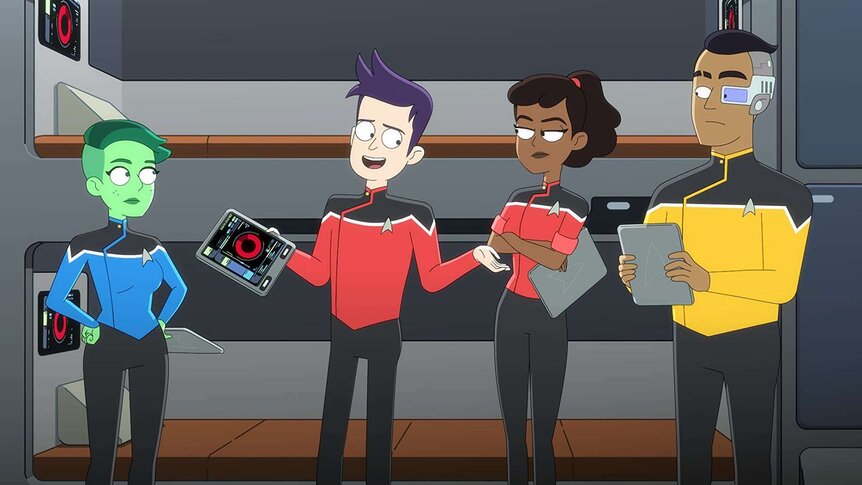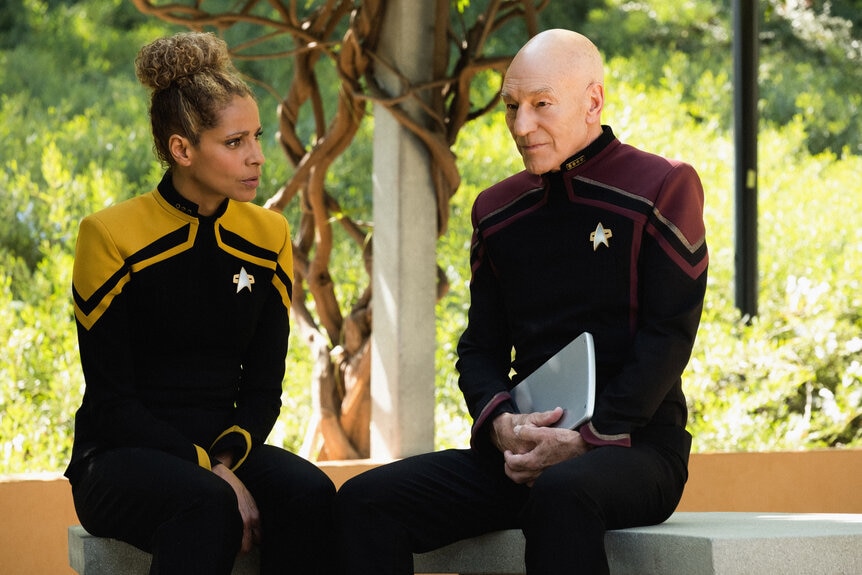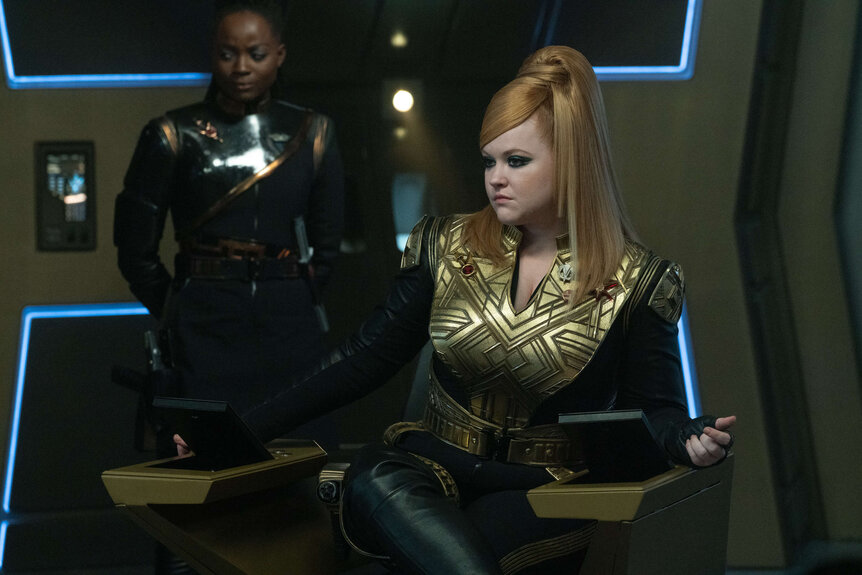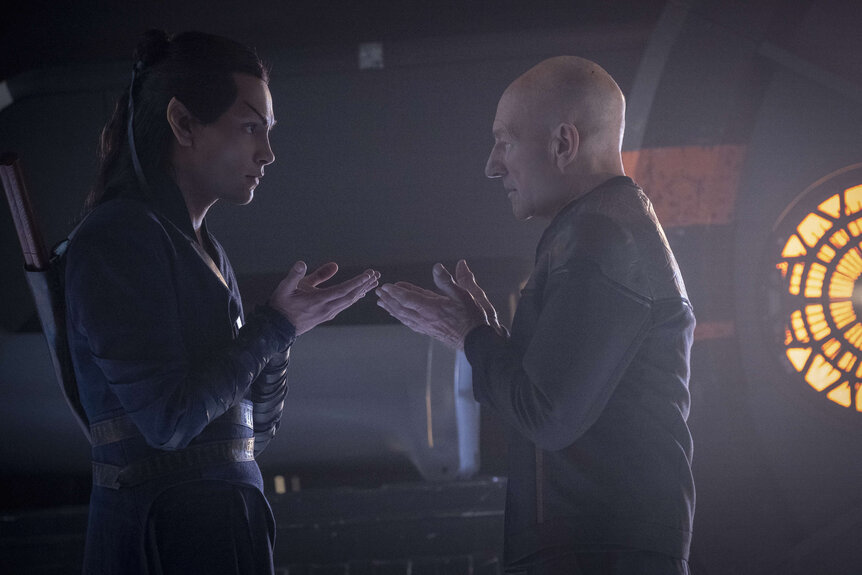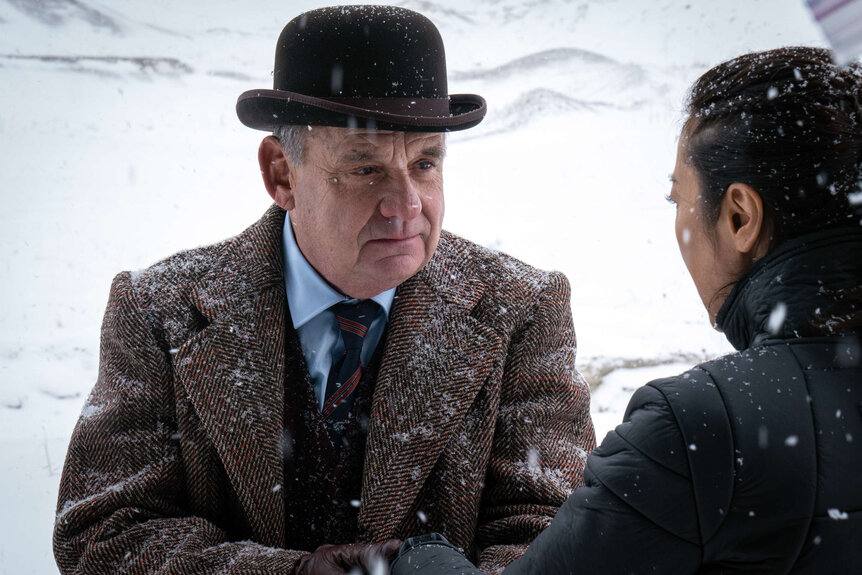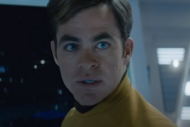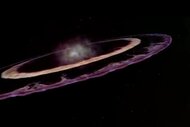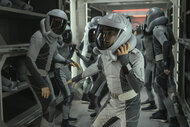Create a free profile to get unlimited access to exclusive videos, sweepstakes, and more!
Multiverses, warp drives, and golems: 7 ways 2020 changed Star Trek canon forever
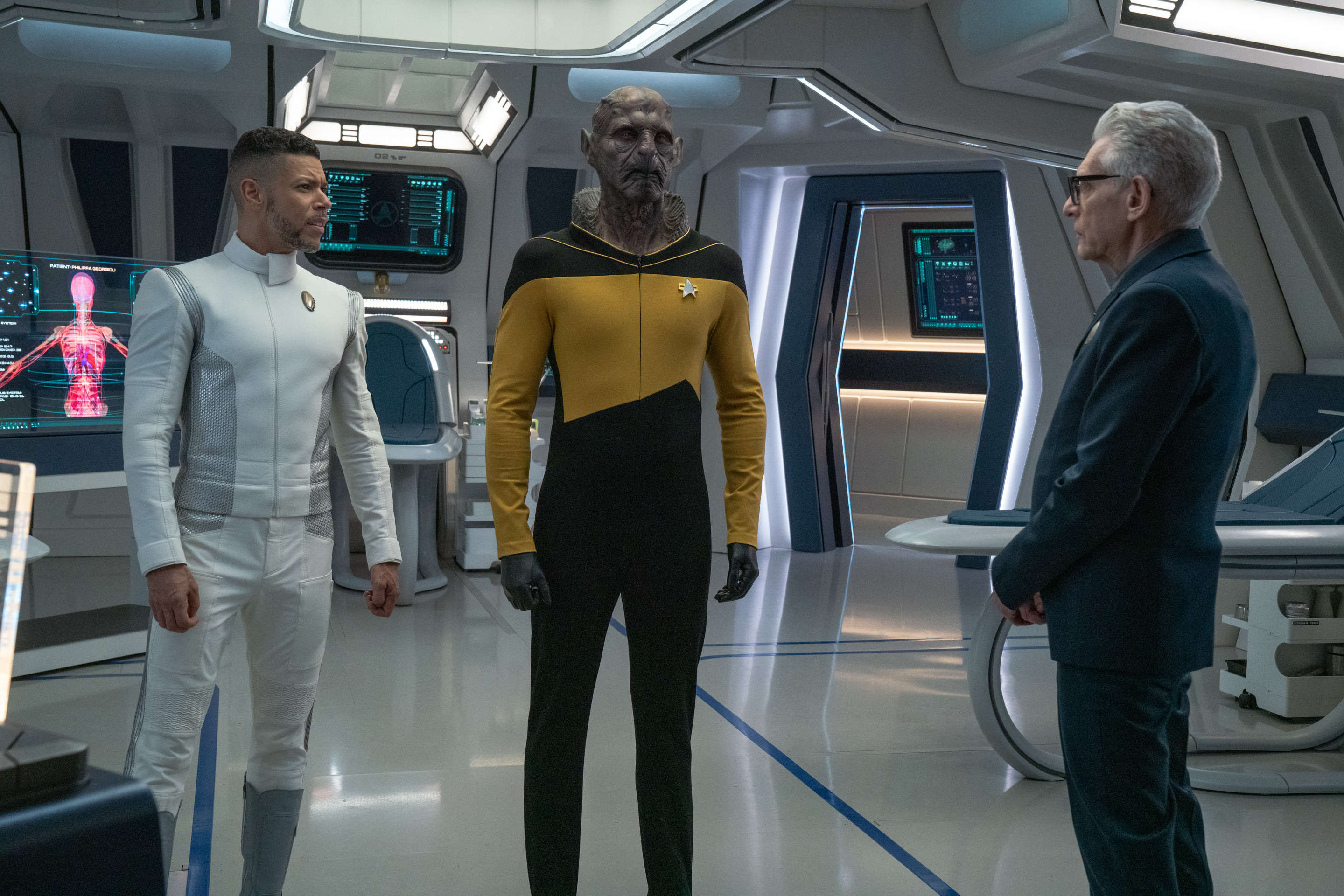
If the Star Trek franchise were Marvel Studios, then 2020 would have been if Ragnarok, Endgame, and WandaVision had all come out the same year. Across three different seasons of new and distinct Trek series, 2020 delivered about 30 hours of new adventures in the Final Frontier. And through all of that, Star Trek grew and changed quite a bit. We were reintroduced to old friends from The Next Generation in Picard, learned how the less-than-famous starship crews get by in Lower Decks, and jumped into a topsy-turvy far-future in Discovery Season 3.
Each Star Trek series of 2020 also took place at a different — and brand new — point in the franchise's complex timeline. For the first time since the release of Star Trek: Nemesis in 2002, each of these shows actually moved forward into the future. Oddly, this fact alone is profoundly radical. The first two decades of Trek in the 21st century — comprising of the prequel series Enterprise, the three reboot films, and the first two seasons of Discovery — were dominated by boldly going into the past. But in 2020, that all changed. Lower Decks takes places in 2380, one year after Star Trek: Nemesis. Picard is set mostly in 2399, but with hefty flashbacks to 2385. Finally, Star Trek: Discovery Season 3 jumps ahead to 3188 and it seems determined to say in the 32nd century forever.
All of this means that Star Trek has boldly altered its vision of the future by actually moving forward in time. Here are the seven biggest ways all of those strange new worlds changed what we know about the canon of the Final Frontier.
Massive spoilers ahead for Star Trek: Picard Season 1, Star Trek: Lower Decks Season 1, and Star Trek: Discovery Season 3.
01. How does the Federation actually work?
In Picard, Lower Decks, and Discovery Season 3, the new Trek of 2020 showed over and over again that the actual functioning of the United Federation of Planets was much trickier than we’ve previously thought. In the year 2399, during the era of Picard, we learned there was a huge area of space that the Federation couldn’t touch, one that instead was regulated by a group called the Fenris Rangers, of which Seven of Nine became a member.
In Lower Decks, we learned that the famous Starfleet “First Contact” missions — the ones where a planet becomes a part of the Federation — were frequently followed by less glamorous, but hugely important “Second Contact” journeys.
And in Discovery Season 3, it was revealed that although the Federation will survive centuries beyond anything we’d seen before, that doesn’t mean that famous Federation planets like Earth or Vulcan would remain a part of the government they helped to create. Throughout all three new Trek shows in 2020, maintaining the dream of the Federation was shown to be a lot more effort than previous Treks let on.
02. Starfleet fashion overload
How many new Starfleet uniform styles did we get in 2020? You’re tempted to say “three,” perhaps thinking that each new series this year gave us a new uniform style. Ah, but bizarrely, each of the new Star Trek series actually gave us multiple different Starfleet uniforms within the same season. Picard Season 1 introduced two new Starfleet uniform designs: a contemporary Starfleet uniform for 2399, but also, retroactive uniforms glimpsed in the flashbacks set in 2385. In addition to Data’s First Contact uniform, and Jean-Luc and Data both wearing TNG uniforms in a dream sequence, Picard Season 1 featured four different kinds of Starfleet uniforms throughout its run.
In Lower Decks, we got yet another new Starfleet uniform style, the kind of TNG-remix uniforms for the crew of the USS Cerritos. In the finale, when the USS Titan came to the rescue, we saw that these uniforms were in service at the same time (2380) as the First Contact uniforms.
And then, there’s Discovery. Not only did we get a whole new line-up of Starfleet Uniforms for the year 3188, but we also got a new Starfleet badge that has retroactively been incorporated into the 2258 uniforms of the DISCO crew. On top of that, Adira’s vision of the previous hosts of Tal gave us a glimpse of at least three other Starfleet uniform variants from the intervening centuries; ranging from the 2399 Picard uniforms to at least two other versions in-between. Discovery also revisited the Mirror Universe, giving everyone a new look at the Terran Empire Starfleet uniforms. And, right toward the end, Season 3 gave us a look at Starfleet uniforms from roughly the 29th Century. On top of all that, we also got a glimpse at a “time soldier” uniform from the Kelvin Universe version of 2379, which basically was like a retro version of the early TNG uniforms from the Prime version of the 2360s.
So, with Discovery Season 3 alone, if we’re only counting eras of different Starfleet uniforms — and the Mirror Starfleet — we’re dealing with at least eight different types of Starfleet uniforms!
03. Warp Drive will never be the same
Since the beginning of the Star Trek franchise, the use of a specific type of “space warp” propulsion has defined the entire way in which the people of Trek boldly go and do, anything. But in the 32nd Century, as seen in Discovery Season 3, a huge, cataclysmic event called “The Burn” destroyed a bunch of ships using the good-old dilithium crystal, warp drive situation. This means that alternative methods of traveling through space are a huge part of the future of Trek.
The USS Discovery has had the Spore Drive since it was introduced in Season 1, but until now it always felt like a weird quirk of the series. Now, the Spore Drive has become central to the survival of Starfleet, the Federation, and perhaps everyone. It's also unclear if anyone will be able to ever really use warp speed again.
04. The Multiverse game is afoot
In addition to jumping to the future in Discovery Season 3, the franchise also dipped into at least two very famous parallel dimensions. In the two-part episode "Terra Firma," Georgiou (Michelle Yeoh) returned to the famous Mirror Universe first seen in the TOS episode "Mirror, Mirror," but last visited back in Discovery's first season. This time around, Georgiou gets a chance to do things a little bit differently, which suggests that even within the Mirror Universe, there are various, different, branching realities.
Speaking of branching realities, for the first time ever, it was revealed that the Prime Universe is totally aware of the "reboot" Kelvin Universe created in Star Trek 2009. In "Terra Firma, Part 1" Kovich (David Cronenberg) tells Culber about a refuge from a "parallel universe caused by the incursion of a Romulan mining ship." Sounds innocuous enough, but that Romulan mining ship was the Narada, commanded by Nero (Eric Bana.) That's the ship that destroyed the USS Kelvin and created all the reboot movies. Of course, within the reboot movies, we knew those characters were aware of the Prime Universe because they'd all met Prime Spock. But now we know the reverse is true, too.
Finally, even Lower Decks hinted at some knowledge of parallel dimensions of Trek. In the episode "Crisis Point," Mariner jokes about Boimler being "kind of a Xon" — a deep-cut reference to a Vulcan character who was never actually seen in on-screen canon, but nonetheless was created (and cast!) to replace Spock in a never-made 1970s Trek series. If Mariner knows about Xon, then it's like she's aware of canceled Star Trek shows that somehow exist in parallel dimensions, right?
05. The Romulans' past — and future — has been totally redefined
Let's give up for the... Romulans? More than any other moment in Trek history, the Romulans were a big deal in 2020. Star Trek: Picard redefined the entire history of the Romulans. We learned about not one, but two secret Romulan sects — the underhanded robot-hating Zhat Vash, and their must nicer, nobler enemies, the warrior nuns of the Qowat Milat. Picard revealed that both of these groups of Romulans have existed for thousands of years, and up until this series, the Zhat Vash toiled totally in secret. Because the Zhat Vash operated as a secret group within the Tal Shiar, this revelation has also cast certain episodes of TNG in a new light. For example, was that Romulan spy in "Data's Day," actually a member of the Zhat Vash? Probably!
Elnor and the Qowat Milat also helped to fill in the story of what happened to the Romulans after the supernova from Star Trek 2009 destroyed the planet Romulus. Meanwhile, Narek's scheming showed the deep division within the Romulan culture and their ongoing hatred of the Federation. All of this set the stage for Discovery Season 3, in which we fast-forward to the 31st Century and learn that the Romulans and Vulcans are now living in peace! And they've renamed the planet Vulcan "Ni'Var."
All of these strands were connected in the Discovery episode "Unification III," when Burnham watched a holographic recording of Spock talking to Picard about Romulan-Vulcan unity. This storyline, which was begun in the TNG episodes "Unification I" and "Unification II," is finally concluded with Discovery, when Burnham learns that her brother's TNG mission was successful.
On top of that, Picard co-creator Kirsten Beyer also brought the Qowat Milat into the 31st Century of Discovery and showed us that Burnham's mom had become one of those fancy warrior nuns. My friends, choose to live, and Jolan tru!
06. The Guardian of Forever is now named “Carl”
Since 1967, the most famous time portal in science fiction (arguably) has been Star Trek's Guardian of Forever. The crooked bagel-shaped vortex from Harlan Ellison's "City on the Edge of Forever," only appeared in Trek canon twice, once in Ellison's episode and a second time in D.C. Fontana's Animated Series episode, "Yesteryear."
But "Terra Firma Part 2," in Discovery Season 3, the Guardian of Forever is back, and this time it has a quirky persona that calls himself "Carl" — because the Discovery writers revealed that Carl was inspired by Carl Sagan. Meanwhile, the idea of having the Guardian possess a physical persona actually echoes a concept from Ellison's original script. Seeing the Guardian of Forever in Discovery was easily the biggest, and the most nostalgic callback to TOS since Vina and the Talosians appeared in Season 2. Will we see Carl/the Guardian again? Well, we now know where to find him, and should be suspicious of all bowler hats that randomly appear in future installments of Star Trek.
07. Jean-Luc Picard is no longer human
Star Trek has brought characters back from the dead many times. But, it's never brought someone back from the dead and changed their species. In the Season 1 finale of Star Trek: Picard, that's exactly what happens. After succumbing to that brain abnormality that has plagued him since TNG's "All Good Things..." Jean-Luc Picard died, only to be reborn in a new "Golem" body.
No bones about it, this body is an android/Synth body, effectively making Picard the same species as Soji, and to a degree, Data. Unlike Data though, Picard's new body has a finite period of time left before it dies "naturally," but still, Jean-Luc's status as a lifeform has fundamentally changed. Picard Season 1 showrunner Michael Chabon said the decision to turn Picard into an android was something he and the other writers of the show felt was inevitable.
"If we didn’t do, then that meant we were totally chickening out on one of our clear, stated theses of the series — that synthetic life is just as valuable as organic life," Chabon told SYFY WIRE in March. "If Picard believes that premise, and by extension, we believe it, and the Federation and Starfleet believe it, then the ultimate test and the ultimate proof of that belief can be found in making Jean-Luc Picard a synthetic life form."
This new classification for Picard briefly created two entries for the character on the popular Trekkie wiki, Memory Alpha. Currently, Memory Alpha lists Picard as belonging to two different species: human and Golem. Many fans think that Season 2 will find Picard thinking about the "Ship of Theseus" paradox, in which a ship has all of its parts replaced, begging the question, is it the same object? When asked if Picard is having these thoughts, Michael Chabon said on Instagram, "I would."
In the Season 1 finale, Soji tells Picard that the lifting of the Synth ban in Federation space means she's free to travel. Picard looks at her warmly and says, "Me, too." In 1979, at the end of Star Trek: The Motion Picture, we were told: "The Human Adventure is just beginning." In 2020, Star Trek has broadened that adventure by asking new questions about what it means to be human.
